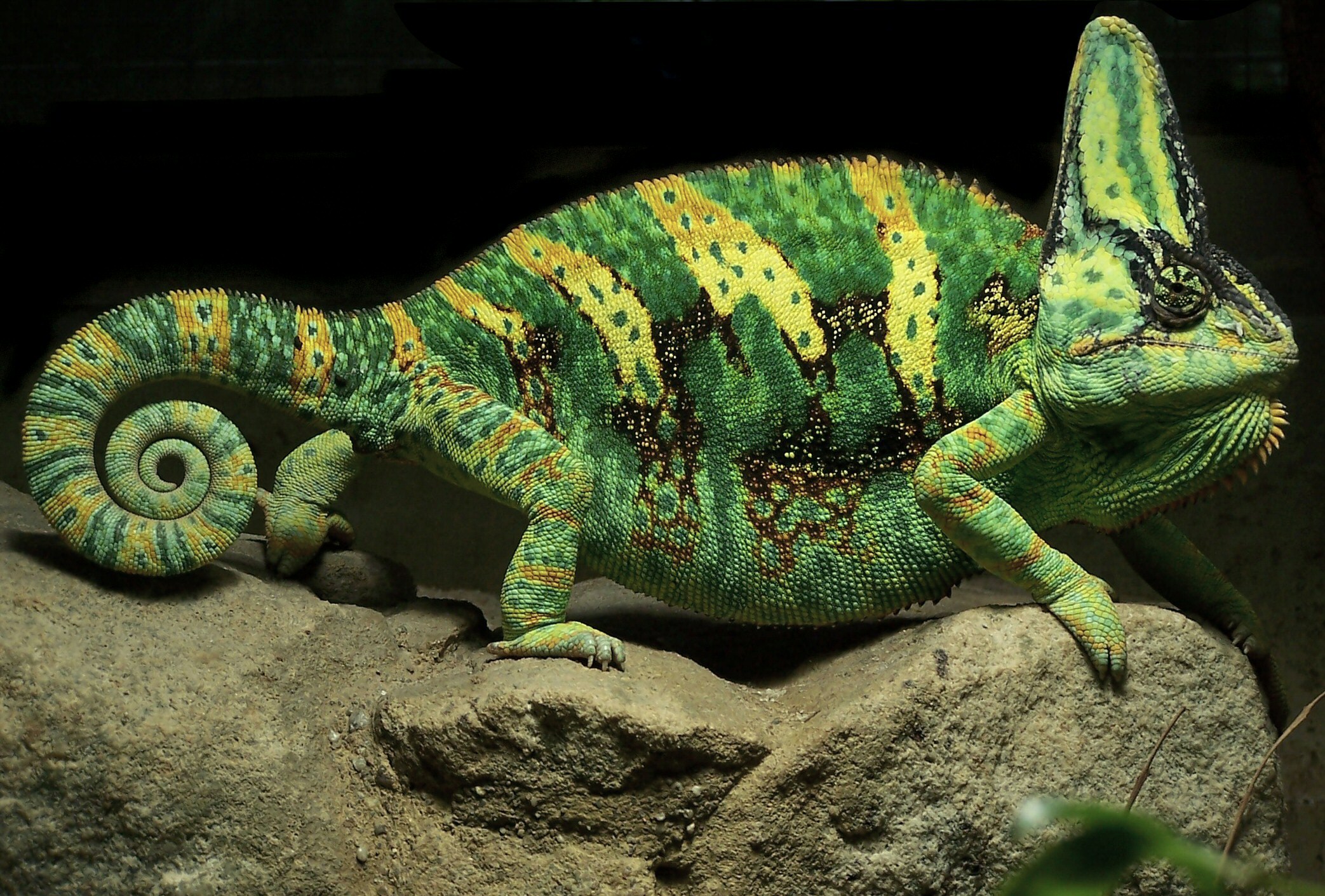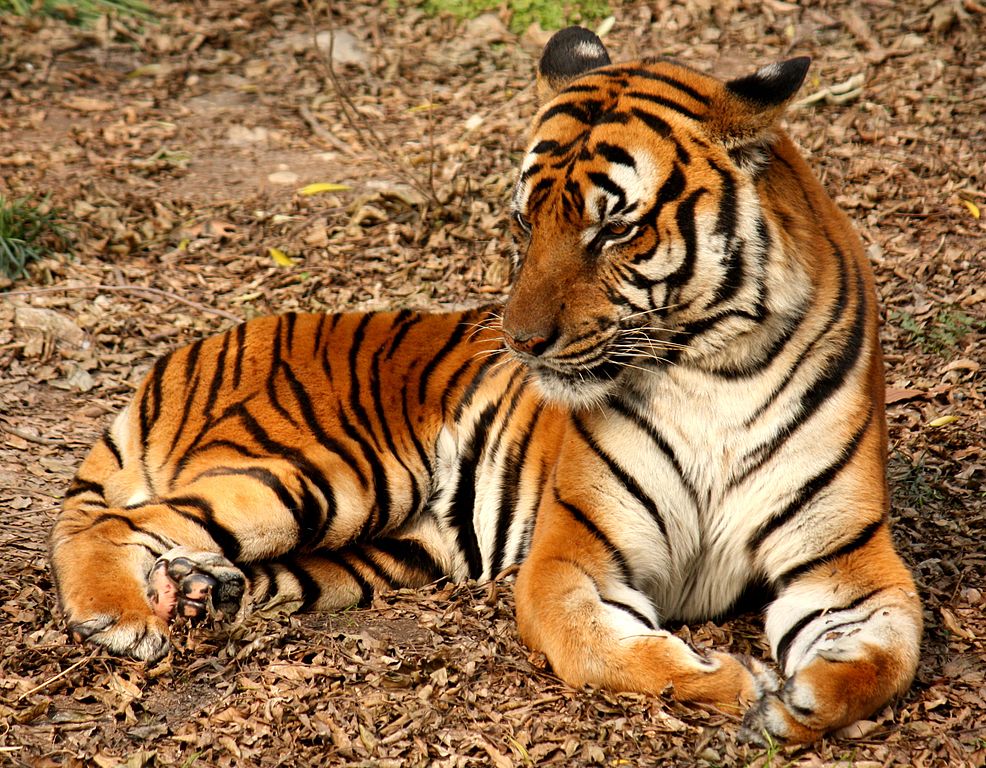Biologists Home In on Turing Patterns

In 1952, Alan Turing, a British mathematician best known for his work on code-breaking and artificial intelligence, was convicted of engaging in homosexual acts and sentenced to chemical castration. Amid that personal drama, he still found the time to publish a visionary paper (opens a new tab) on the mathematics of regularly repeating patterns in nature, which could be applied to the stripes on tigers and zebra fish, the spots on leopards and the spacing in rows of alligator teeth, to name a few.
Now, more than 60 years later, biologists are uncovering evidence of the patterning mechanisms that Turing proposed in his paper, prompting a resurgence of interest in them, with the potential to shed light on such developmental questions as how genes ultimately make a hand. “That structure is there,” said Jeremy Green, a developmental biologist at King’s College London. “We just need to put the chemistry onto the mathematics to get the biology.”
For the work that led to his 1952 paper, Turing wanted to understand the underlying mechanism that produces natural patterns. He proposed that patterns such as spots form as a result of the interactions between two chemicals that spread throughout a system much like gas atoms in a box do, with one crucial difference. Instead of diffusing evenly like a gas, the chemicals, which Turing called “morphogens,” diffuse at different rates. One serves as an activator to express a unique characteristic, like a tiger’s stripe, and the other acts as an inhibitor, kicking in periodically to shut down the activator’s expression.
To explain Turing’s idea, James Murray, emeritus professor of mathematical biology at the University of Oxford and an applied mathematician at Princeton, imagined a field of dry grass (opens a new tab) dotted with grasshoppers. If the grass were set on fire at several random points and no moisture were present to inhibit the flames, Murray said, the fires would char the entire field. If this scenario played out like a Turing mechanism, however, the heat from the encroaching flames would cause some of the fleeing grasshoppers to sweat, dampening the grass around them and thereby creating periodic unburned spots in the otherwise burned field.
The notion was intriguing but speculative. Turing died two years after the publishing of his paper, which languished in relative obscurity for decades. “He didn’t actually apply it to any real biological problem,” Murray said. “It was mainly a boon for mathematicians looking for analytical problems.”
Although there was an explosion of theoretical work and computer modeling in the 1970s that successfully reproduced patterns like spots and stripes using Turing mechanisms, molecular biology was nowhere near the point where researchers could identify the specific molecules acting as activators and inhibitors.
The latest research suggests that Turing-type mechanisms may be responsible for the spacing between hair follicles in mice and feather buds on a bird’s skin, the ridges that form on a mouse’s palate and the digits on a mouse’s paw.
Some biologists remain skeptical that Turing mechanisms are sufficient to account for these periodic patterns, particularly because there are other viable models, including one proposed by Lewis Wolpert, an emeritus developmental biologist at University College London. In Wolpert’s model, cells interpret their position in space based on how much of each morphogen there is, resulting in stripes, spots or digits. Furthermore, Wolpert said, “no one has yet identified the molecules that work for a Turing mechanism in development.”
That lack of experimental identification has been the most serious stumbling block for Turing advocates, but that has begun to change. Last year, Green and his colleagues (opens a new tab) identified two chemicals that behave as activator and inhibitor, giving rise to the regularly spaced ridges found in the roof of the mouth in mouse embryos. A protein called fibroblast growth factor (FGF) serves as the activator, and a gene variant dubbed Sonic hedgehog (Shh) acts as an inhibitor. When the researchers increased or decreased the activity of those chemicals, the pattern of ridges were affected just as Turing’s equations predicted.
Biology is messy and complicated, with many confounding factors, which makes it difficult to demonstrate experimentally that a pattern results from a Turing mechanism. So Green and his cohorts removed one of the ridges, thereby increasing the space between ridges. If there were no Turing mechanism, a replacement ridge would have formed. Instead, the researchers saw extra ridges pop up in a branching pattern to fill the space — a hallmark of Turing’s model.

Applicable to any number of systems, the Turing mechanism is almost too general. Researchers have identified Turing-like features in the distribution of species in ecological systems, such as the predator-prey model, in which the prey function as activators, seeking to reproduce and increase their numbers while the predators act as inhibitors, keeping the population in check. Neurons, too, can be described mathematically as activators or inhibitors, encouraging or dampening the firing of other, nearby neurons in the brain.
“If you have any two processes that act [as activator and inhibitor], you can always get periodic patterns out of them,” said Green, pointing to the ripples that form on sand dunes as an example. “Clearly there are no diffusing morphogens at work there. It’s just that the processes have a property you can represent using a diffusion function.”
Turing admitted as much in his original paper: “This model will be a simplification and an idealization, and consequently a falsification,” he wrote. That doesn’t necessarily mean the model is wrong, but it is challenging to move from identifying the behavior of a system that seems to follow a Turing mechanism to identifying the specific physical processes that act as activator and inhibitor. For example, experiments with zebra fish stripes have shown that they arise from a Turing mechanism, but rather than secreting chemicals that spread throughout the system, the fish has two kinds of cells that serve the same purpose as activators and inhibitors. The molecules most likely to play the activator/inhibitor roles can only be embedded in a cell membrane, not secreted. So for the mechanism to work, the cells must have contact with one another.

Granted, the Turing model has shortcomings. A Turing mechanism alone cannot account for scaling in nature’s patterns. Chicken eggs are a good example of scaling, in that they can be large, small or anything in between, but regardless of the size of a fertilized egg, if it hatches, the product will be a complete chick — not one that is missing crucial parts. “The question Turing fails to answer is: How do you get that scaling process?” Green said.
The answer might lie in a new paper (opens a new tab) on the formation of digits in the paws of mouse embryos. According to co-author Maria A. Ros of the University of Cantabria in Spain and the Spanish Research Council, the study aimed to explore polydactylism — the formation of extra digits, for example a sixth finger on one hand.
Digit patterning is similar to that of stripes. But although fingers fan out in a pattern of stripes, the distance between the fingertips — the wavelength (opens a new tab), if you will — and the distance between the knuckles are different. The pattern scales proportionately. If those stripes arise from a Turing mechanism, something else must be influencing the scaling.
Several genes are associated with polydactylism, most notably a gene called Gli3 that is regulated by Shh. Earlier studies had concluded that the absence of both Gli3 and Shh in mouse embryos would lead to an increase in a class of genes known as Hox genes, essential to the proper development of the body’s structure, including the number of fingers and toes.
Mice have 39 Hox genes in four distinct clusters. Ros decided to test the hypothesis that more Hox genes led to more digits by progressively knocking out Hox variants. She expected that the number of digits would decrease as more Hox genes were removed. Instead, the opposite occurred: the more Hox genes were removed, the more extra digits appeared — as many as 15 in one case.
And the extra digits were thinner and closer together; they split into a branching pattern — the same pattern Green observed in his experiments with the ridges on mouse palates. When James Sharpe, a systems biologist at the Center for Genomic Regulation in Barcelona and one of Ros’ co-authors, fed the experimental data on the thickness and spacing of digits into his computer models, he was able to reproduce the effect via a Turing mechanism.
It turns out there are two processes at work in digit patterning: the Turing mechanism that produces the stripelike pattern and a second tuning mechanism to control scaling via the Hox genes. Sharpe prefers to view them as different aspects of the same mechanism.
It might be best to consider Turing’s model as playing a specific development role within the context of a larger biological system, in concert with other factors, rather than as a standalone mechanism. “The Turing process is a piece of the puzzle in understanding how multiple morphogens work together,” said Green.
We already know that genes interact both with other genes and with myriad environmental factors to express traits. “To really understand biological development, we need to know how genes influence the physical elements which generate the observed patterns and, of course, what the actual biological elements are and how they interact with each other,” Murray said. Then again, theoretical modeling has its place. “If all we had to use to understand development was genetics, we would still not know how to build a chicken.”
This article was reprinted on ScientificAmerican.com (opens a new tab).



